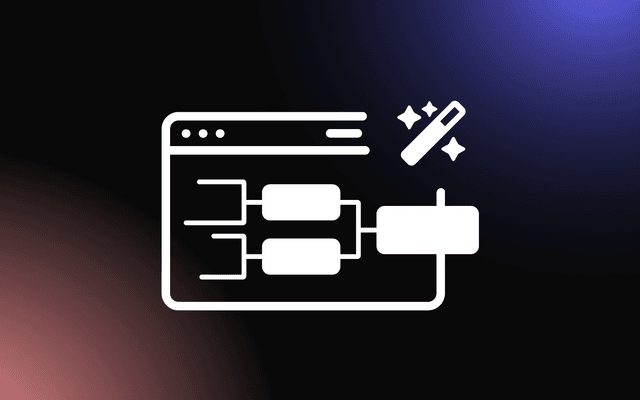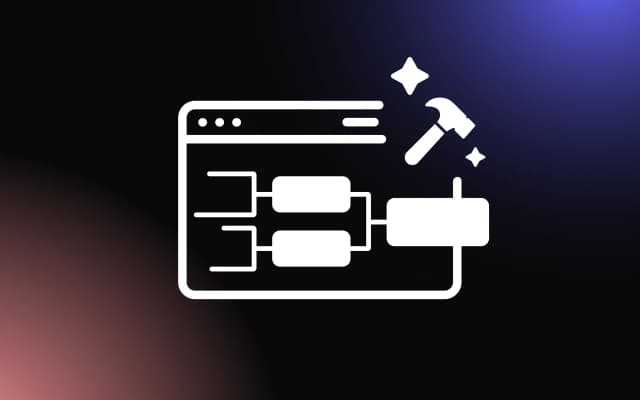
Selecting the right layout for your online bracket is a critical decision that can influence the engagement and satisfaction of participants and viewers alike. The layout determines how information is presented and navigated, impacting the overall user experience.
This article will guide you through the various layout options for online brackets, discussing the advantages and considerations of each.
Whether you're organizing a small local competition or a large-scale international tournament, the layout you choose must not only display the progression of competitors clearly but also enhance the excitement and drama inherent in any competitive event.
Fundamentals of Bracket Layouts
Overview of Common Layouts
Bracket layouts are the backbone of tournament design, providing the framework for competition progression. Common layouts include the straightforward single-elimination bracket, where a loss results in immediate elimination; the double-elimination bracket, which offers a second chance after a loss; and the round-robin format, where each participant plays every other participant.
More complex layouts like the Swiss system and pool play leading into elimination rounds are also used, particularly in events with a large number of entrants or where a more thorough ranking is desired.
Pros and Cons of Each Layout Type
Each bracket layout has its advantages and disadvantages. Single-elimination brackets are simple and quick but can be unforgiving and may not always result in the best overall competitor winning. Double-elimination allows for a more accurate assessment of skill but can be time-consuming and complex to manage.
Round-robin is excellent for ensuring that all players get a substantial amount of playtime and can be very fair in determining the best overall player, but it can be impractical with a large number of participants due to the number of games required. Organizers must weigh these factors against their tournament objectives, resources, and participant expectations to choose the most suitable layout.
Assessing Your Tournament Needs
Size of the Tournament
The scale of your tournament is a critical factor in planning. A small tournament might be well-served by a simple single-elimination bracket, ensuring a swift and straightforward competition.
Conversely, a larger tournament with many participants might benefit from a round-robin or pool play format to ensure that each competitor has ample opportunity to play before moving into the elimination stages. The size will also dictate the resources needed, such as venues, scheduling, and staff.
Type of Competition
The nature of the competition—whether it's a physical sport, an e-sport, a board game, or any other type of contest—will influence the bracket layout.
Physical sports with longer game durations might prefer a single or double-elimination to minimize fatigue, while quick-paced e-sports could entertain a more extended round-robin phase without exhausting participants. The competition type also affects the audience's expectations and engagement, which is crucial for the tournament's public appeal and success.
Customization Options for Bracket Layouts
Branding and Personalization
Customizing bracket layouts with your organization's branding can significantly enhance recognition and professionalism. This can include logos, color schemes, and typography consistent with the brand's identity.
Personalization goes a step further by tailoring the experience to the participants and audience, such as featuring team mascots or personalized stats. These touches not only make the brackets more visually appealing but also help in creating a more memorable and unique tournament experience.
Interactive Elements
Incorporating interactive elements into bracket layouts can greatly increase engagement. This could mean live updates of scores, clickable brackets for detailed information on teams and players, or even integration with social media for real-time reactions and discussions.
Interactive brackets can also include prediction games or polls, allowing fans to engage with the tournament actively, which can be particularly effective in the digital space where user interaction is a key metric of success.
User Experience and Bracket Layouts
Navigability for Participants
For participants, the ease of navigating through bracket layouts is crucial. A well-designed bracket ensures that players can easily find their match-ups, understand the progression system, and know exactly when and where they are supposed to compete.
Clarity is key, with straightforward paths from one round to the next and visual cues that help avoid confusion. This not only improves the experience for competitors but also streamlines the management of the tournament itself.
Accessibility for Spectators
Spectators are more likely to follow a tournament when the bracket layout is accessible and easy to understand. The layout should be designed with the audience in mind, offering clear visibility of the entire tournament's progress at a glance.
This could involve adaptive designs for various devices, ensuring that those following on mobile phones have just as good an experience as those on desktop computers. Additionally, providing explanations for the tournament structure and how to read the brackets can be beneficial for those less familiar with such formats, thus widening the tournament's appeal.
The Impact of Layout on Tournament Management
Streamlining Match Updates
The layout of a bracket can significantly affect the efficiency of tournament management. A well-structured layout allows for quick and easy updates to match results, which is essential for maintaining the flow of the tournament.
Organizers should be able to input scores and update the bracket in real-time, ensuring that participants and spectators have access to the latest information. This requires a layout that is not only visually clear but also integrated with backend systems that can process updates swiftly and accurately.
Handling Unexpected Changes
Tournaments often face unforeseen circumstances, such as player dropouts or scheduling conflicts. A flexible bracket layout is vital in managing these changes without disrupting the tournament's progress.
The layout should allow organizers to make adjustments on the fly, whether it's reshuffling players or modifying match times. The ability to handle these changes smoothly maintains the integrity of the competition and minimizes frustration for all involved. It's important that the layout provides a level of adaptability to accommodate the dynamic nature of live tournaments.
Integrating Social Media with Your Bracket Layout
Enhancing Audience Engagement
Integrating social media with your bracket layout is a strategic move to boost audience engagement. By embedding social media feeds or hashtags directly into the bracket interface, organizers can create a live, interactive experience.
This integration encourages participants and viewers to share updates, celebrate victories, and commiserate losses in real-time. It also allows for the incorporation of live polls, reactions, and discussions, turning a simple bracket into a hub of community activity and engagement.
Leveraging Social Sharing
Social sharing features are essential for virality and can increase the reach of your tournament exponentially. With easy-to-use share buttons and pre-formatted posts, participants can spread the word about upcoming matches or results across their networks with a single click.
This not only amplifies the excitement around the tournament but also drives traffic back to the bracket, potentially attracting new fans and participants. By making each bracket outcome shareable, organizers tap into the power of social networks to enhance visibility and interest in their event.
The Best Tool for Bracket Design

For designing engaging and professional-looking brackets, the Free Bracket Maker by Common Ninja is a standout solution. It provides a rich set of features that cater to both the aesthetic and functional aspects of bracket design. Users can easily create single elimination, double elimination, and custom brackets that are not only interactive but also visually appealing.
The tool's intuitive interface allows for quick customization, enabling users to add images, choose from various layouts, and apply custom CSS for a personalized touch. The responsive design ensures that the brackets look great on all devices, making the Free Bracket Maker an excellent choice for anyone aiming to elevate their tournament's presentation online.
Best Practices for Online Bracket Design
Clarity and Simplicity
The cornerstone of effective online bracket design is ensuring that the information is easy to digest. A clear and simple layout helps participants and viewers understand the tournament's progression without confusion.
Use legible fonts and distinct lines to delineate matchups. Avoid clutter by minimizing the use of excessive colors or text, which can detract from the overall readability.
Flexibility and Scalability
An online bracket should be designed with flexibility in mind to accommodate last-minute changes or updates. This adaptability is crucial for handling unexpected events, such as player dropouts or additional entries.
Scalability is also important; the design should work well whether it's for a small local tournament or a large-scale event with numerous participants. Ensure that the bracket system you choose can dynamically adjust to these changes without requiring a complete redesign.
Conclusion
The layout of your online bracket is the backbone of your tournament's digital presence. It's the framework upon which the excitement of the competition is built and shared. As we've explored, there's no one-size-fits-all solution; the right layout for your bracket depends on the size and style of your tournament, the preferences of your audience, and the capabilities of your platform.
By carefully considering these factors and choosing a layout that offers clarity, ease of use, and visual appeal, you can create an engaging and memorable experience for everyone involved. Remember, the ultimate goal is to complement the competitive spirit with an intuitive and accessible design that keeps participants and fans coming back for more.



